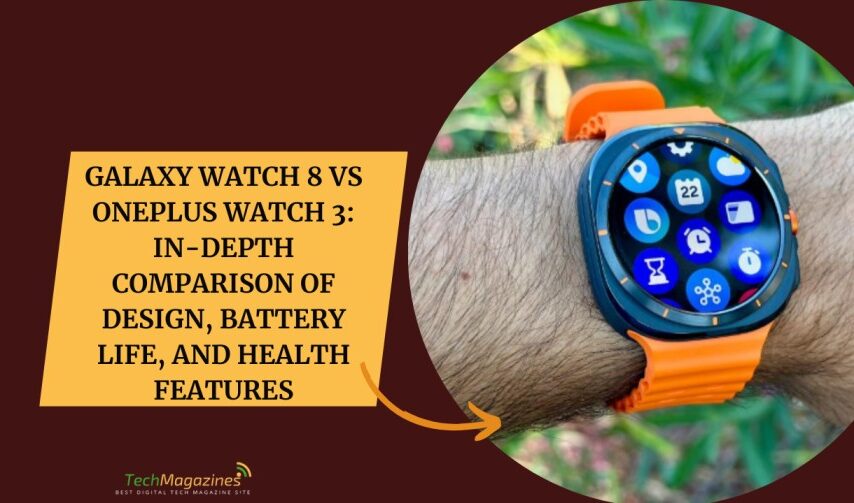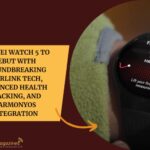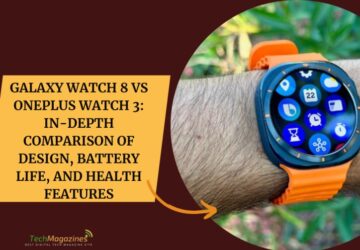Samsung prepares to uncover its Galaxy Watch 8, a device that will carry the design language of the Galaxy Watch Ultra into new territory. The company has decided that one size will no longer suffice. Where the OnePlus Watch 3 offers only a single, bulky option, Samsung will provide multiple sizes, acknowledging that not all wrists are created equal.
Design and Display Innovation
The new watch will retain familiar screen proportions, yet the case itself may grow larger to house whatever improvements Samsung deems necessary. Reports speak of a “squircle” design—that peculiar marriage of square and circle that designers seem to favor when they cannot decide between tradition and novelty. The circular display will sit within this compromise shape, as if Samsung wishes to have things both ways.
Daniel Araujo, Samsung’s corporate vice president, spoke recently of “innovative design” and expanded health functions. These are the phrases corporations use when they wish to suggest progress without committing to specifics. He mentioned premium experiences and a broader product range, which is to say that Samsung intends to make more watches and charge more for them.
Custom Fit vs Bold Display
The OnePlus Watch 3 presents itself differently. It makes no apologies for its size, sporting a 1.5-inch LTPO AMOLED display that blazes at 2,200 nits when needed. The battery endures longer than most, and the visuals remain sharp and bright. Yet this watch suffers from the same inflexibility that Samsung now seeks to remedy: it comes in one size only, large and imposing, suitable for some but not for all.
Health Tracking Features Compared
When it comes to hardware, however, Samsung seems to want to stake the claim of superiority with its BioActive sensor setup, which includes optical bio-signal detection and bioelectrical impedance analysis. Such mechanisms tease deeper insights into how the body works, potentially surpassing the sensor abilities that OnePlus offers. The Samsung watch can also include new fitness features that expand on what the Galaxy Watch 7 is capable of.
Battery Endurance and Charging Speeds
The issue of battery life also appears as a vital aspect of differentiation. OnePlus Watch 3 has a large 631mAh power cell integrated within itself, which allows it to work between four to six days without needing a recharge and also supports fast charging, which fills up the tank in about thirty minutes. By comparison, the Galaxy Watch 8 will probably maintain the same power figures as the Galaxy Watch 7, so the bigger 44mm model will have around 435mAh and the smaller 40mm device will have 300mAh, giving around forty hours of active use.
Samsung’s Gemini Upgrade vs OnePlus Dual-System Approach
As regards the operating systems, the Galaxy Watch 8 will come with the Wear OS 6 with Gemini functions that promise to be more efficient and have better battery management than before, by possibly up to ten percent. OnePlus Watch 3 runs on Wear OS 5 in combination with RTOS, a dual-system designed to extend battery life but which could initially be slower to get software updates. However, the OnePlus device is expected to receive Wear OS 6 updates eventually.
Pricing and Preferences
As the release of the Galaxy Watch 8 approaches, likely in July, according to Samsung’s usual schedule, potential buyers face a choice. At around $350, the OnePlus Watch 3 will be good value to those who prioritize battery life and screen size over other features. In contrast, those who prefer a more compact watch and advanced health-tracking features can find the Galaxy Watch 8 more useful to them, despite the smaller battery capacity.
The future product of Samsung is all set to offer a complete wearable with the focus on health improvement and user customization, and OnePlus continues to dominate in terms of battery life across the Wear OSmechanisms. Consumers have to look at their needs in terms of looks, health functioning, and power functionality when deciding on which of these two competing devices to buy.
Conclusion
The OnePlus Watch 3 is the friend that comes to a party with a portable charger in hand- reliable, vivid, and impossible to miss, yet a bit on the nose about it. In the meantime, the Galaxy Watch 8 looks to be the Swiss Army knife of wearables, with just about every health sensor under the sun to keep a hypochondriac crying tears of joy. The biometric bonanza that Samsung has created will easily charm you, in case you are the kind who monitors your heart rate more than your social media. However, when you do not want to engage in charging tag every other day, the marathon battery life of OnePlus makes a strong argument. The ultimate victor here? Your wrist, which has been neglected long enough over the years in favor of smartphones. Make your selection carefully- this relationship may extend to a minimum of four to six days.
FAQs
Q1: Which watch has better battery life?
A definite marathon winner in this line is the OnePlus Watch 3 with its massive 631mAh battery, which lasts 4-6 days. The Galaxy Watch 8, in its turn, lasts only 40 hours, which is sufficient to cover a weekend trip, but will require you to carry that charger when going on a longer journey.
Q2: What’s this “squircle” design everyone’s talking about?
Samsung has seemingly created a new form by mushing a square and a circle- because why take sides in a geometry lesson? This compromise design is where the circular display is placed, as though Samsung could not decide which route to take between the square display of Apple products and the traditional round watches, so they compromised.
Q3: How bright are these displays?
With a 1.5-inch LTPO AMOLED screen, the OnePlus Watch 3 ramps up to 2,200 nits. Samsung is yet to disclose their brightness details, but based on their history, it will be a spec that will not make you strain your eyes under the sun.
Q4: Which has better health tracking?
Samsung is flexing its BioActive sensor muscles by way of optical bio-signal detection and bioelectrical impedance analysis- fancy ways of saying it can pretty much read your medical history off your wrist. OnePlus also has good health tracking capabilities, though Samsung wants to become your virtual doctor in a watch.







